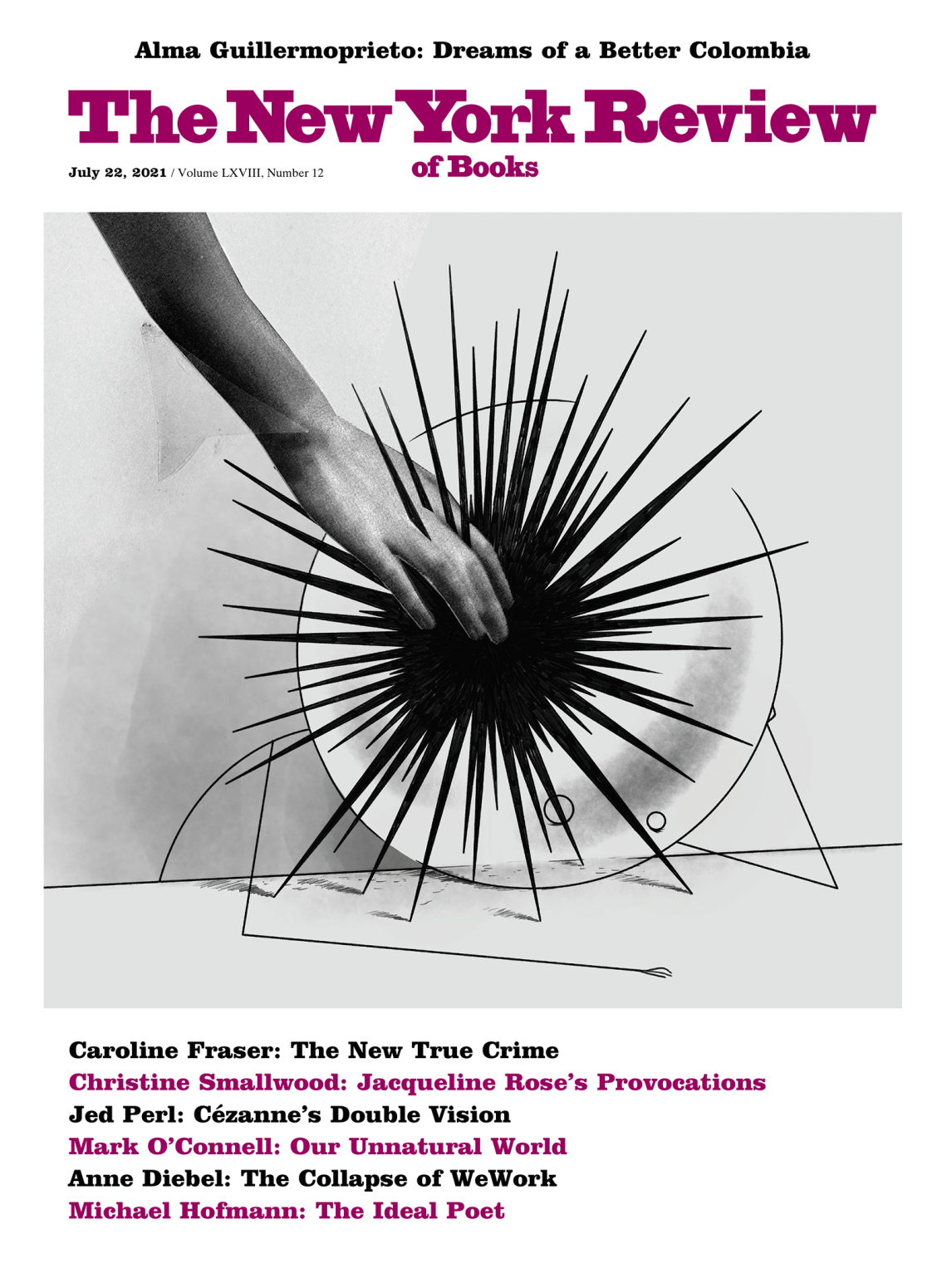In response to:
Phantasms of the Opera from the March 11, 2021 issue
To the Editors:
It was very encouraging to see a review of two important books dealing with opera scenography [Larry Wolff, “Phantasms of the Opera,” NYR, March 11]. Theatrical design, particularly lighting, is seldom examined in any meaningful way by critics, and only recently by scholars, yet as Wolff rightly reminds us, “Stage technology is fundamental to every opera production.”
In discussing these books, Wolff explores the profound impact of gaslight and the development of projection technologies on opera. But as is all too often the case, the designers—the artists responsible for creating the scenic wonders that sometimes made a greater impact than the operas themselves—go almost unmentioned. Reading the review, one might get the impression that it was the composers who were responsible for the sets and lighting.
The French archaeologist Auguste Mariette, who oversaw the construction of scenery for Aida, gets a mention, as does Louis Daguerre, who codesigned Aladin, ou La lampe merveilleuse, the production which introduced gaslight to the Paris Opéra in 1822. But Daguerre’s codesigner, Pierre-Luc-Charles Ciceri, décorateur en chef of the Opéra from 1818 to 1847 and one of the most important designers of the period—Alexandre Dumas père called him the father of modern design—is nowhere to be found in the review, although he is mentioned several times in Gabriela Cruz’s book. When Wolff discusses the astonishing lighting effects in Aladin, he is actually describing the work of Ciceri. The success of Meyerbeer’s Robert le diable a few years later was also Ciceri’s triumph (Daguerre left the Opéra after Aladin). Théophile Gautier declared that the design for the ballet of the nuns in Robert le diable was equal in importance to the music. That scene is often considered the origin of Romantic ballet, and, in fact, Ciceri went on to design La Sylphide and Giselle.
Wolff discusses the atmospheric lighting that is explicitly or implicitly suggested by the libretti (the librettists are never credited in the review either), but in many instances the effects were not realized until later productions. This was particularly true of the early productions of Richard Wagner’s operas, whose scenographic techniques are the focus of the book by Gundula Kreuzer. Wolff refers to the foggy mists, the rising seas, and the haunted ship of The Flying Dutchman, yet Wagner complained that at the Dresden premiere the sea remained quiet and the ghost ship would not budge. It is absolutely true that Wagner revolutionized both opera and the opera house (the latter using ideas taken from architect Gottfried Semper) but, ironically, innovation seemed to stop at the proscenium. The scenery, lighting, and technology on the stage itself (other than his use of steam for some effects and to mask scene changes) remained stuck in older nineteenth-century practices. It remained for Swiss designer Adolphe Appia a couple decades later to find the artistic means to realize Wagner’s intentions.
The scenic environments of a dramatic work may emanate from the composer and librettist, but they are achieved—or not—by other artists who should be acknowledged.
Arnold Aronson
Professor Emeritus of Theatre
Columbia University
New York City
Larry Wolff replies:
I’m grateful to Arnold Aronson for putting a spotlight on Ciceri and his long and fascinating career in Paris as a set painter and stage designer. A decade older than Rossini and Meyerbeer, he was, like them in the 1820s and 1830s, adapting his art to the new possibilities of gaslight. He even traveled to Switzerland to achieve a greater realism in painting the sets for Rossini’s William Tell in 1829, while Rossini himself exercised his musical palette on alpine scene painting. Both the composer and the painter had to think about adapting their representation of landscape to the new technology of lighting.
It is more complicated to think of Wagner as a collaborative creator, since he was both composer and librettist, and was deeply involved in staging his own works. Certainly Appia, half a century younger than Wagner, was able to develop his pioneering three-dimensional design conceptions in a technological age that the composer never knew: the transition from gaslight to electrical lighting. Appia’s contemporary Alfred Roller, the Vienna Secession artist, was also carrying out innovative stage design work at this technological juncture, creating sets with artistic lighting effects in collaboration with Gustav Mahler at the Vienna Court Opera, beginning with their landmark production of Tristan und Isolde in 1903. Like Ciceri, Roller had a very long career, surviving just long enough to replace the original Bayreuth production of Parsifal (designed by Paul von Joukowsky), after fifty years, with a new one in 1934—at Hitler’s particular request.


